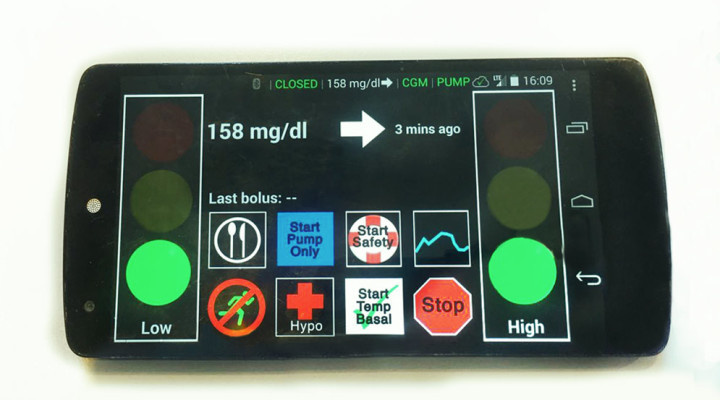“Now our great challenge is to make the patient more independent”
Garelli and Hernán De Battista, CONICET researchers, are part of a research team who created a 100% Argentine algorithm to control artificial pancreas.
At the end of 2001, CONICET researchers at the Grupo de Control Aplicado del Instituto de Investigaciones en Electrónica, Control y Procesamiento de Señales (LEICI, CONICET – UNLP) began to study the development of an artificial pancreas for insuline-dependent diabetic patients. At that time, experts worked with Spanish colleagues and participated in the first clinical trials carried out in hospitals in Valencia and Barcelona with very positive results.
Five years later, one CONICET researcher at the Instituto Tecnológico de Buenos Aires (ITBA), one postdoctoral fellow of the Universidad Nacional de Quilmes (UNQ) and doctors of the Hospital Italiano of Buenos Aires, managed to conduct the first clinical studies in Latin America. For this study, the research team had the support of the Administración Nacional de Medicamentos, Alimentos y Tecnología Médica (ANMAT), and the Center for Diabetes Technology of the University of Virginia, USA, and Nuria and Cellex foundations of Argentina and Spain respectively.
“The most modern treatment available for type 1 diabetes patients contains a bomb that administers insulin that does not produce the organism and one continuous glucose monitor, which controls the level of sugar in blood and alerts when there are dangerously low or high figures”; Hernán De Battista, CONICET principal researcher at the LEICI, explains. Furthermore, the scientist adds: “So far, the communication between the two devices is very basic or nonexistent. The artificial pancreas is the integration of both through an algorithm, a smart program, which permanently adjusts the insulin doses. Its main objective is to maintain the patient in normoglycemia, that is, within the normal parameters of blood sugar during most of the day.”
Clinical trials were divided into two phases. The first one was conducted in November 2016, and the second was planned for the beginning of 2017. “They last for 36 hours during which people are on-site and remotely monitored by an interdisciplinary team of engineers, endocrinologists, pharmacologists and nurses”, Fabricio Garelli, CONICET associate researcher at the LEICI comments. “The first stage was successful as the artificial pancreas managed to regulate the blood sugar of all the patients. Experts used one algorithm created by the University of Virginia, which provided the mobile phones that run the program and work as the nexus between the bombs and the monitor. In this part, we participate in the design of the trial, plans for meal and physical activities, monitoring and medical protocol, and the analysis of the results. During the next phase, we are going to test a new algorithm that we completely designed in here”, the researcher affirms.
This 100% Argentine algorithm is being tested in the USA in one simulator with one hundred virtual patients, that is, in mathematical models developed from information of the clinical behaviour of insulin-dependent people. For Garelli, the main difference between the previous device and this one is “the degree of participation of the patient with the treatment. Standard therapies with a bomb combine two types of supply: basal insulin is administered throughout the day in small doses and is aimed at keeping a normal level of sugar when fasting. The profile is loaded in the bomb by the doctor and daily repeated. The boluses are big amounts of insulin injected normally at meals and the patients participate by indicating the amount of carbohydrates they are going to eat.”
“Most commonly tasted artificial pancreas algorithms replace basal profile but the patient is still participating in the calculation of insulin bolus. Considering the one we have developed, we aim to provide the system with more autonomy by eliminating those boluses. This is a great challenge taking into account the high incidence food intake has in the level of sugar in blood”, the scientist comments. De Battista explains that “this type of developments requires a lot of testing and clinical evidence. Furthermore, it demands a great investment, and we work with the resources we have”. For this reason, the tests are conducted with five patients, for instance.” For the researcher, “the idea is to do more tests with a larger number of people so as to offer this technology to the private sector in order to transform the product into an available commercial product.”
“Our aim is to make the insulin dependent patient less limited by their disease and less worried by the treatment. But that requires us to guarantee the reliability of the algorithm and that is a long term issue. These tests allow us to gain more experience, clinical evidence and critical cases so as to perfect one system that is really complex. We are advancing towards a reliable solution but there is still a long way to go to solve the problem definitely”, De Battista concludes.
*Apart from Garelli and De Battista, the Argentine algorithm was also designed by Ricardo Sánchez Peña, CONICET principal researcher at the ITBA and Patricio Colmegna, CONICET postdoctoral fellow at the UNQ.
By Marcelo Gisande. CCT La Plata.
